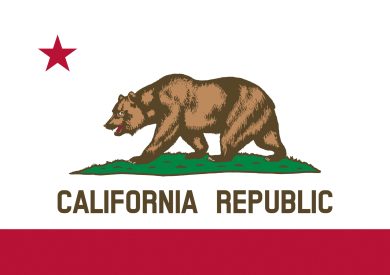
 Popular Cities For Lending in California
Popular Cities For Lending in California
Long Beach
Los Angeles
Oakland
Riverside
Sacramento
San Diego
San Francisco
San Jose
Santa Ana
Stockton
In the California real estate market, grabbing properties before your competition is essential for making the best deals. Although real estate investors sometimes go the traditional route and seek bank loans, the process is anything but speedy.
When time is of the essence, waiting for the lengthy process of getting approval is not an option for most investors. California hard money lenders specialize in providing hard money loans which provide quick funds to investors. These loans are for a non owner occupied property or in some cases for business purpose loans.
California Hard Money Lender FAQ’S
Below are some of the most frequently asked questions we get regarding hard money loans and lenders in California.
What Do California Hard Money Lenders Specialize in?
California hard money lenders specialize in providing short-term, creative financing for real estate investors. If you seek a conventional lender to purchase an investment property, your loan request will be based on the property’s value and your assets. Your credit score, job, and finances will be scrutinized intensely. Hard money lenders base their final loan decisions on the after-repair value. The ARV represents the potential value of a property after all repairs have been accomplished.
What are the Benefits of California Hard Money Loans?
California hard money loans offer advantages that traditional banks cannot. Lenders like Acamnet Financial offer a higher level of flexibility than banks. When qualifying for this type of loan, lenders do not delve too deeply into the finances of real estate investors. In most cases, simply present the property and your plans, which saves you the hassle of gathering countless financial documents.
Do California Hard Money Lenders Look at my Credit Score?
One of the greatest benefits of working with California hard money lenders is the lack of credit score requirements. One of the first things a bank does is check your credit score. You can get approved for a hard money loan in California even if you have bad credit or poor credit, bankruptcies, and foreclosures in the past. California Hard money lenders primarily care about the property you are purchasing.
What is the Interest Rate & Points for Hard Money Loans in California?
Interest rates for hard money loans in California are typically higher than traditional bank loans (conventional loans) because of the greater risk lenders must take on when approving loans. When searching for a hard money lender near me in California, you will find average interest rate is between 8%-15%. You should also be aware that lenders sometimes charge points that are meant to offset their administrative costs. Each point represents 1% of the total loan amount. The average points lenders charge is between 1 to 3. Some lenders may charge up to 10 points. These points are due upfront or at closing, depending on the lender.
What Should I Look for in a California Hard Money Lender?
There are many benefits to working with a California hard money lender. You just need to make sure you are working with the right lender. You can rely on Acamnet Financial Group when you need us most. We offer reliability, consistency, experience, and support. As a real estate investor, you know the importance of grabbing the best property deals when they become available.
How can Hard Money Lenders in California Help Me?
Whether you are new to real estate and real estate projects or an old pro, you know having the capital to purchase real estate is essential. Without funds, you will miss out on real estate transactions. When you partner with hard money lenders in California, you will quickly get the money you need without jumping through the hoops of traditional bank lenders.
How do I get a Hard Money Loan in California?
When you want a hard money loan in California, begin by preparing the property information. Location, size, purchase price, after repair value, repair costs, etc. In most cases, the financing will be based on these numbers. Then, apply for a hard money loan in California using this information and supply some financial information. Then, an appraisal will be ordered to assess the loan-to-value ratio, which will influence the loan amount.
How do I Refinance a California Hard Money Loan?
Refinance a California hard money loan will involve moving from a high interest, short term loan to a longer term, usually lower interest rate loan. Typically a conventional type of loan. When refinancing a California hard money loan you will find it will have a more stringent set of guidelines. You will need to have sufficient credit and income qualifications. As the lending landscaping and regulations constantly change, you want to consult a knowledgeable conventional loan expert.

Current Real Estate Trends In California (2024)
The California housing market has seen a variety of changes in recent months. Single-family home prices experienced a minor decline of 0.7% in July, but still had a 0.2% gain in comparison to the past year. Sales of single-family homes dropped by 3% in July, down 9% from the year before.
The San Francisco Bay Area saw a huge dip of 5.2% in home prices, with San Francisco County having an 8.5% decrease. On the other hand, home prices in Southern California were mostly on the rise, except for Riverside County which had a 2.1% decrease.
However, the inventory of homes remains scarce, with active listings continuing to decrease and not enough houses on the market. In addition, mortgage rates have gone up to over 7%, potentially influencing refinancing and making it hard for people to purchase.
Looking ahead, the California housing market is still in a state of uncertainty due to the rising interest rates and the limited number of homes available. Potential buyers may have doubts about when it is the best time to buy a home, raising questions about the prospective state of the market in 2024.
Market Overview
The data analysis indicates that California’s housing market is displaying some resilience despite a 3% decrease in existing, single-family home sales and a slight decline of 0.7% from the previous month.
Nonetheless, it does show a 0.2% increase from the same period last year, showing that demand remains strong despite rising interest rates and limited housing supply.
This indicates that despite the current market conditions, the California housing market is maintaining a certain level of stability.
Sales and Price Trends
Sales of single-family homes in California experienced a 3% drop in July, pointing to a downward trend in the state’s housing market. This decrease can be credited to factors such as higher mortgage rates and a lack of homes available on the market. The table below shows the sales and price trends in the California housing market:
|
Sales Trend |
Price Trend |
|
Decreasing |
Stabilizing |
The decrease in sales is making it difficult for buyers, while prices have remained stable, indicating some resilience in the market.
Inventory Challenges and Future Outlook
In the California housing market, buyers and sellers are facing a number of difficult obstacles. An extreme shortage of available homes has become a huge problem, with active listings dropping more than 30% from the previous year.
Although the inventory saw a slight uptick in July, it still lags far behind last year’s numbers, intensifying competition among buyers.
Looking ahead, the future is uncertain with rising interest rates and a tight supply of housing, making it hard for potential buyers to decide when to make a purchase.
As the market moves into 2024, this issue is sure to remain a major challenge.
Sources
https://managecasa.com/articles/california-housing-market-report/
https://www.noradarealestate.com/blog/california-housing-market/
https://www.forbes.com/advisor/mortgages/real-estate/california-housing-market
|
Sales Trend |
Price Trend |
|
Decreasing |
Stabilizing |
Sales TrendPrice TrendDecreasing

All About California
California, the third-biggest state in the United States, is renowned for its mixed and wide-reaching geography, featuring the Pacific Coast, Sierra Nevada mountains, Mojave Desert, and Central Valley.
Its population is estimated to be 39 million, making it the most populated state in the nation.
California’s robust economy, powered by major metropolitan areas such as Los Angeles and San Francisco, has the most incredible gross state product in the U.S. and the fifth-biggest on the planet.
Despite its lower high school education rate, the state is the site of esteemed universities and a prosperous educational environment.
California’s remarkable history, from Spanish colonization to the California Gold Rush and its eventual admittance as the 31st state, has added to its cultural importance.
The state’s climate often shifts from a warm Mediterranean along the coast to monsoon seasonal weather inland.
California also has a diverse Indigenous population with highly developed ecosystem management practices.
This article will explore the history, natural landscapes, cultural diversity, renowned landmarks, and dynamic cities that make California a captivating state.
The History of California
During the Mexican Period, Alta California remained an unpopulated administrative region. After gaining independence from Spain in 1821, Mexico took ownership of California, which was situated on the distant western boundary of the nation.
The missions set up by the Spanish missionaries were secularized by 1834, becoming Mexican government property. With the secularization of the missions, the clout and sway of the Catholic Church decreased, leading to transformations in the economic and social landscape.
During this time, ranchers developed as leading institutions owned by Californians, descendants of Spanish and Mexican settlers. These ranchos were expansive land grants utilized primarily for raising cattle and producing agricultural items.
The Mexican Period formed the basis for the future progression and alteration of California’s economy and society. Going into the following section about investigating California’s natural landscapes, the state’s history provided the foundation for the exploration and admiration of its varied geography and natural wonders.
Exploring California’s Natural Landscapes
California’s natural landscapes offer a remarkable variety of geographical features and ecosystems. The state’s geography is genuinely impressive, from the breathtaking Pacific Coastline with its sandy beaches and jagged cliffs to the majestic Sierra Nevada mountains.
The Mojave Desert, with its distinct flora and fauna that have adapted to the problematic arid conditions, is also located in California. The fertile Central Valley is known for its extensive fields of crops and its bounty of agricultural productivity.
Mount Whitney’s snow-capped peaks and Badwater Basin, the lowest point in North America, exemplify the vastness of California’s scenery. These awe-inspiring wonders provide a backdrop for the state’s cultural diversity, which will be explored afterward.
Cultural Diversity in California
Cultural diversity in California is evident in the state’s vibrant and dynamic atmosphere. The state has a rich history of immigration and settlement, resulting in a melting pot of different nationalities and cultures. One prominent cultural influence in California is the Hispanic population, which has strong ties to Mexican, Spanish, and Latin American traditions. Additionally, the state is home to significant Asian communities, including Chinese, Japanese, Filipino, and Indian societies, each contributing unique customs and practices. African American, Native American, and Pacific Islander cultures also significantly shape California’s cultural landscape. Parades, festivals, and cultural events are held to celebrate this diversity to showcase various communities’ vibrant traditions and heritage. This cultural medley sets California apart as a unique and culturally rich state.
Moving on to the next section, California’s diverse cultural origins are reflected in its iconic landmarks. These landmarks represent the state’s history and highlight its cultural significance.
Iconic Landmarks of the Golden State
Exploring California’s iconic landmarks is an incredible journey into the Golden State’s rich history and culture. From the breathtaking coastline of Big Sur to the majestic redwood forests of Sequoia and Kings Canyon National Parks, the variety of natural spectacles is unparalleled.
Arguably, the most iconic of all is the Golden Gate Bridge, a celebrated symbol of San Francisco and a feat of engineering. The Hollywood Sign in Los Angeles brings forth the glitz and charm of the entertainment industry.
Furthermore, Alcatraz Island carries a notorious past due to its former prison, while the iconic Disneyland Resort in Anaheim lures millions of visitors annually. These landmarks don’t just attract tourists but also serve as a significant contributor to California’s vibrant tourism industry.
Lastly, the various cities of the state bring together an immense collection of cultures, creating a unique melting pot.
California’s Vibrant Cities
California’s metropolises are renowned for their diversity and groundbreaking ideas. From the bustling byways of Los Angeles to the tech center of Silicon Valley, the Golden State’s cities flaunt a fusion of culture and economy.
San Francisco, renowned for its celebrated Golden Gate Bridge and cable cars, is admired for its artistic flourishes and forward-thinking values.
San Diego beckons visitors from all corners of the earth with its balmy beaches and renowned zoo.
Then there is Sacramento, the state’s seat of government, boasting a long backstory and acting as the political nucleus of California.
Each city has its individuality and captivating attractions, making it an ideal destination for adventurers seeking to experience the state’s multifaceted and upbeat urban lifestyle.


 Popular Cities For Lending in California
Popular Cities For Lending in California